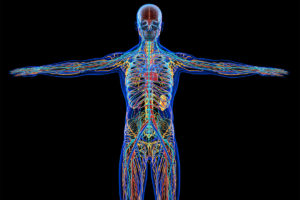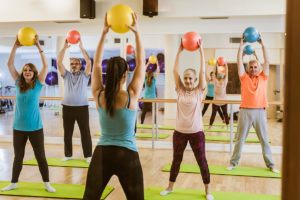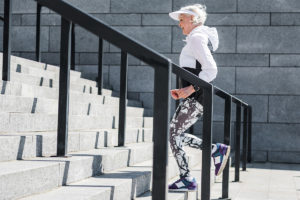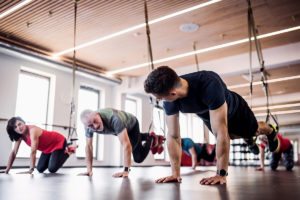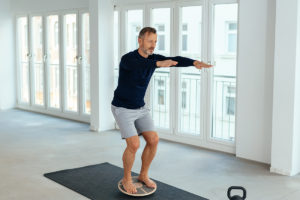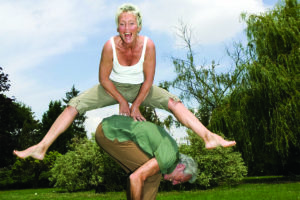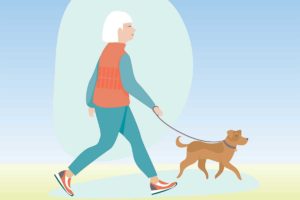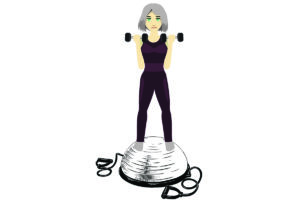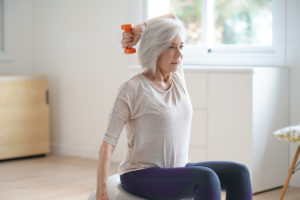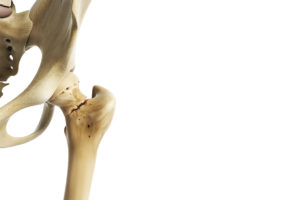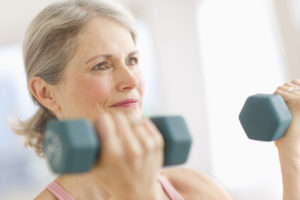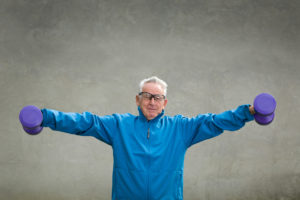Functional Aging/Older Adults
Inflammation: Obesity, Diabetes, Aging and Exercise
Inflammation is an essential defense system for enhancing survival. Learn how the inflammation process is linked to obesity, diabetes, aging and exercise.
Effects of Aging on the Neuromuscular System
Most people think of the “baby boom” as a huge uptick in the birthrate following World War II, and while that’s true, here’s another view: By the end of 2030, all baby boomers will be over the age of 65 (United States Census Bureau 2018), resulting in a “senior boom.” As this shift occurs, it’s increasingly likely that fitness professionals will need to work with people who are experiencing normal age-related physiological changes. Understanding how these changes impact seniors is essential for trainers and instructors wanting to best serve this population’s unique needs.
Older Adults and Brain Fitness
Numerous studies demonstrate that cardiovascular exercise boosts brain fitness and HIIT improves executive function the most.
Vigorous Exercise Benefits Older Adults
High-intensity interval training improves fitness and well-being among older adults over age 70 and may even increase longevity
Aging Into Fitness
Rocky E. had never set foot inside a gym, but at age 60, he was ready to try something new and reached out to personal trainer Tim Minnick.
High-Intensity Functional Resistance Training for Older Adults
Researchers found that high-intensity resistance training in physical rehabilitation is safe and improves function and satisfaction for older adults.
Water Workouts Make a Splash
Water workouts have been employed with older populations and those with elevated injury risk because of the reduced impact on the skeletal system.
Training for Balance and Function Reduces Falls Among Older Adults
Data shows that exercise training can reduce falls by 23%. Balance and functional training reduced falls among participants compared to nonexercisers.
Power Up Your Aging Clients
With a tailored regimen that includes muscular power training, adults can keep their bodies fit and functional well into their later years.
Better Stretch Options for Older Adults
No doubt you want to select the most functional, effective, helpful exercises possible, especially when working with an older-adult population. This priority extends to any stretches you integrate into class.
How to Lose Weight Without Losing Bone
Wearing a weighted vest may help older adults to successfully lose weight while protecting bone quality and density.
Solutions for Age-Related Decline
Slowing typically begins after age 62 with a decrease in walking speed. The good news is that the right kind of exercise can help slow these declines.
Unstable Resistance Training Benefits Older Adults
Another study exploring the cognitive benefits of exercise affirms the positive effects of unstable resistance training.
Exercise and Longevity for Women
A new study further supports the benefits of maintaining cardiovascular fitness during middle-age and beyond. In a study presented at the European Society of Cardiology’s EuroEcho 2019 meeting in Vienna, high cardiovascular fitness was linked with significantly lower death risks from heart disease, cancer and other causes for middle-aged and older women.
Training Loads for Women Over 40
Personal trainers often have female clients over the age of 40 who have similar complaints about losing muscle mass and gaining body fat. Although these changes aren’t unexpected and can be a normal part of the aging process, they are not inevitable. In fact, the right resistance-training program can positively affect body composition by reducing fat, maintaining and building muscle, and increasing strength in this population.
Personalized Tai Chi
Are customized routines really better than a standard protocol? One recent study posed this question in reference to tai chi: Is it better to offer a standard tai chi sequence or to individualize moves to a person’s needs?
Hip Fracture Risks and Postmenopausal Women
Hip fractures have serious consequences, including an increased risk of death within the first year following the accident. Findings from a recent study offer good news on the benefits of physical activity for postmenopausal women.
NSCA Releases Older-Adult Resistance Training Position Statement
Noting that 1 in 5 Americans will be over 65 by 2030 and that skeletal mass, strength and functional loss represent health risks, the National Strength and Conditioning Association has released its first position stand on older-adult resistance training.
Building Muscle Mass at Any Age
Here’s motivating news for older adults and those who train them. New research shows that older men, even in their 80s, can build muscle mass regardless of training background.
Resistance Training for Older Adults: New NSCA Position Stand
Resistance Training for older adults is pivotal for thwarting the negative effects of a sedentary lifestyle and aging.
